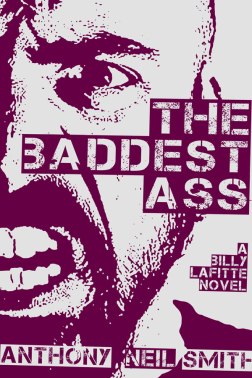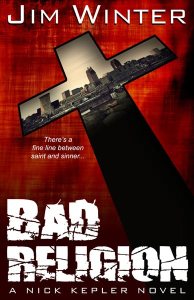 Over the years, most people ask me about WKRP. Was it a real radio station? What local station was it based on? Only when WKRP in Cincinnati was on the air originally, I lived in the Cleveland area. I didn’t listen to rock station WEBN. I listened to the old G98 in junior high. But in high school…
Over the years, most people ask me about WKRP. Was it a real radio station? What local station was it based on? Only when WKRP in Cincinnati was on the air originally, I lived in the Cleveland area. I didn’t listen to rock station WEBN. I listened to the old G98 in junior high. But in high school…
“The THUNDERING Buzzard!” Len “Boom Boom” Goldberg would bellow during station identification. “W Emmm Emmm Essssss!” Alan Freed might have coined the term “rock and roll” on the old WJW, but WMMS made careers. Ask Aerosmith, Todd Rundgren, Bruce Springsteen, even Guns ‘N Roses. WMMS, like a handful of other stations in other markets, was one of the stations you wanted to play your music back in the 70’s and 80’s. A friend who moved to Cincinnati from New York liked to brag she heard of bands like REM and the Red Hot Chili Peppers before I did because she lived in Queens and I lived in Cincinnati. I informed her that an ex-girlfriend gave me my first REM tape in 1988, and my favorite record store played Mother’s Milk on heavy rotation back when it first came out. She didn’t like that. But then she’s not my friend anymore.
In the 1980’s, Kid Leo, the afternoon drive jock, shepherded a lot of new bands on the air both playing their records and interviewing them. To many of use who grew up in the Carter and Reagan eras, Kid Leo was WMMS. It was Leo, now program director and afternoon jock on Little Steven’s Underground Garage on Sirius XM, who embraced new acts and got them on the air. Springsteen and Rundgren were early examples. Break big with Kid Leo in Cleveland, then you were off to Chicago, then New York, and finally, Los Angeles. WMMS became the lynchpin for the entire Midwest.
But WMMS also made sure local acts felt the love, too. The soundtrack to my graduating class’s adolescence includes heavy doses of The Michael Stanley Band. Stanley came very close to breaking big with a few singles you might remember: “He Can’t Love You Like I Love You,” “Lover,” and “My Town.” He might have done it, too, in the early eighties if he and the band relocated to LA or New York or even Nashville, which had become friendlier to rock acts by the mid-eighties. But Stanley was and is loyal to Cleveland. And WMMS was loyal to Stanley, sometimes playing his albums in their entirety, with Stanley (to the record company’s irritation) invitation to go ahead and roll tape. It didn’t hurt his record sales.
We also would start our school days with Jeff and Flash, which evolved into The Buzzard Morning Zoo. From 1972 until the early 90’s, Jeff Kinzbach and newsman Ed “Flash” Farrens handled morning drive in the days before the morning zoo became an annoying cliche on classic rock stations. When a rival station in Chicago called out Rolling Stone for consistently rating ‘MMS as the readers’ favorite major market station, Jeff & Flash called out Rolling Stone for disrespecting the Buzzard’s audience with accusations of ballot-box stuffing. Ironically, WMMS continued to be the readers’ favorite, with WONE in nearby Akron (which, I’m proud to say, employed my cousin, Mike Rose, for many years) suddenly winning the medium market crown.
‘MMS also played a key role in luring the Rock and Roll Hall of Fame to Cleveland. Stations in other cities cried foul, but ‘MMS stood its ground. It also did not flinch from disagreement when Kid Leo interviewed Grace Slick. Slick, in her final days with the Starship, suggested that not only was Cleveland the wrong city, but her own San Francisco did not deserve it, either. She said it belonged in the Deep South because of the music’s delta blues roots. Kind of hard to argue with it.
WMMS is not the station it once was. The same could be said for its Clear Channel sister WEBN on the other end of the state. When I first started visiting Cincinnati in 1990, I noticed a lot of parallels between the asylum up on Frog’s Mountain (better known as the hilltop neighborhood of Mt. Adams) and the Buzzard. ‘EBN, like ‘MMS, was subversive and about as anti-corporate as you could get in 1990. But those days soon ended. Both stations were bought out by Jacor, the radio behemoth that later got swallowed up by Clear Channel. You have to go to satellite radio or the Internet to find anything remotely like it these days.














